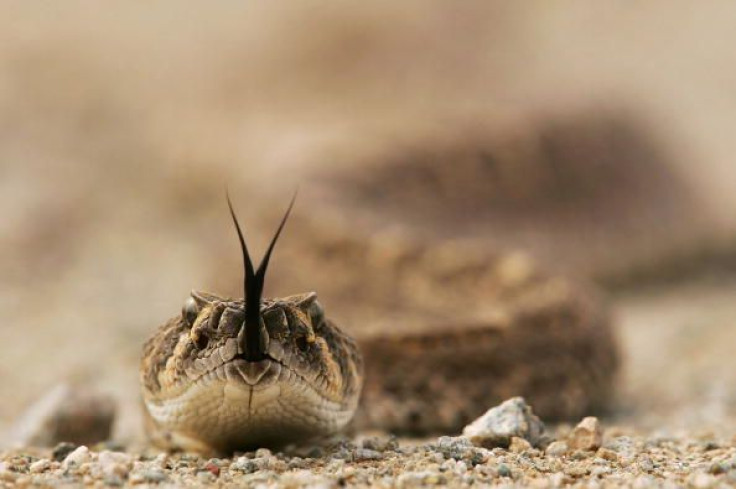Dangerous Fungal Disease Is Killing Rattlesnakes

Rattlesnakes are dying in alarming numbers and a mysterious fungal disease is to blame, National Geographic reported Monday. The disease was responsible to wreaking havoc on frogs, bats and salamanders over the past two decades. If scientists do not get control over the disease, it could have a “disastrous” effect on the rattlesnake population.
If a snake is infected with the disease, which is caused by the pathogen Ophidiomyces ophiodiicola, the creature grows thick blisters and skin lesions on its face. This makes it difficult for the snake to eat and could cause it to starve. While its dangerous for any snakes to catch — up to 30 species have contracted it — the death rate for rattlesnakes is alarmingly high, National Geographic wrote.
READ: Animal Sex And Evolution: How Sex-Obsessed Snakes, Birds Are Hurting Themselves
Fifteen of the snake species effected are from the United States. The “Snake Fungal Disease” was documented in 16 states, the BBC wrote in November. There are as many as 3,000 species of snakes in the world — and all of them could fall victim to the deadly fungal disease.
While the main problem appears to be in the U.S., snakes in captivity contracted it in Australia, Germany and England. “I’m concerned about spillover and introduction to other countries if the United States might be the point source,” said Jonathan Kolby, an American biologist and conservationist, to National Geographic. “I think that deserves more attention from other countries, too.”
It’s currently unknown where the fungal disease came from and why it’s spreading through snakes, frogs and bats. “It just seems one after the other that these emerging fungal diseases are appearing in different types of animals, yet they’re spread enigmatically,” said Kolby. “We don’t know where exactly they came from or why they suddenly appear to be more virulent.”
The reason it’s important to have healthy snakes in the ecosystem is because they help control the population of mice and rats. Without snakes, the numbers of mice and rats could increase at an alarming rate. Rodents are generally carriers of parasites and ticks, which could be dangerous for human healthy.
“This is especially important now, with talk of this being one of the worst Lyme disease years that we’ve had in a long time,” Kolby said.
Changes in the environment might be to blame for the fungal disease’s outbreak. “It could be that if we’re experiencing cooler and wetter springs in which snakes have to spend more time underground and not be able to reach those high body temperatures necessary to fight off infection that it could leave them more susceptible,” Jeffrey Lorch, a microbiologist at the United States Geological Survey, told the publication.
Humans could have also caused the rise of the fungal disease. “We found several things would kill the fungus: bleach, alcohol and over-the-counter cleaners,” researcher Matt Allender from the University of Illinois in Urbana told the BBC in November. “But what didn't kill it was an agricultural fungicide. It's concerning. Is the emergence of widespread fungicide use linked to emergence of some of these fungal diseases?”
READ: Why Did Snakes Lose Their Legs? Scientists Blame A Switch For The Sonic Hedgehog
The eastern massasauga rattlesnake is endangered, according to the U.S. Fish and Wildlife Service. Other reasons that landed them as an endangered species is because or eradications, habitat loss and improper management of their habitat.
The fungus seemingly crept up in the last two decades. “We saw zero occurrence of the fungus from 1880 all the way through to 1999,” Allender added. “The year 2000 is when we start to see its emergence in the area.”
Follow me on Twitter @mariamzzarella
© Copyright IBTimes 2024. All rights reserved.












